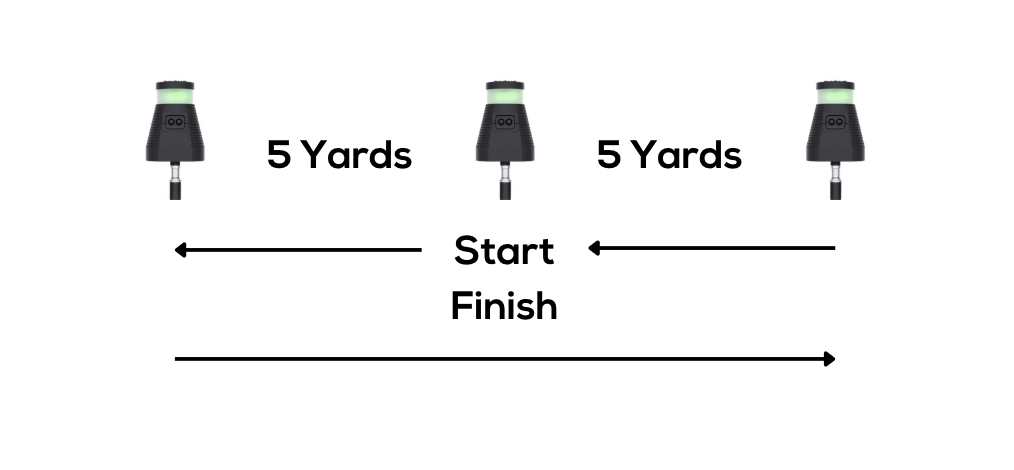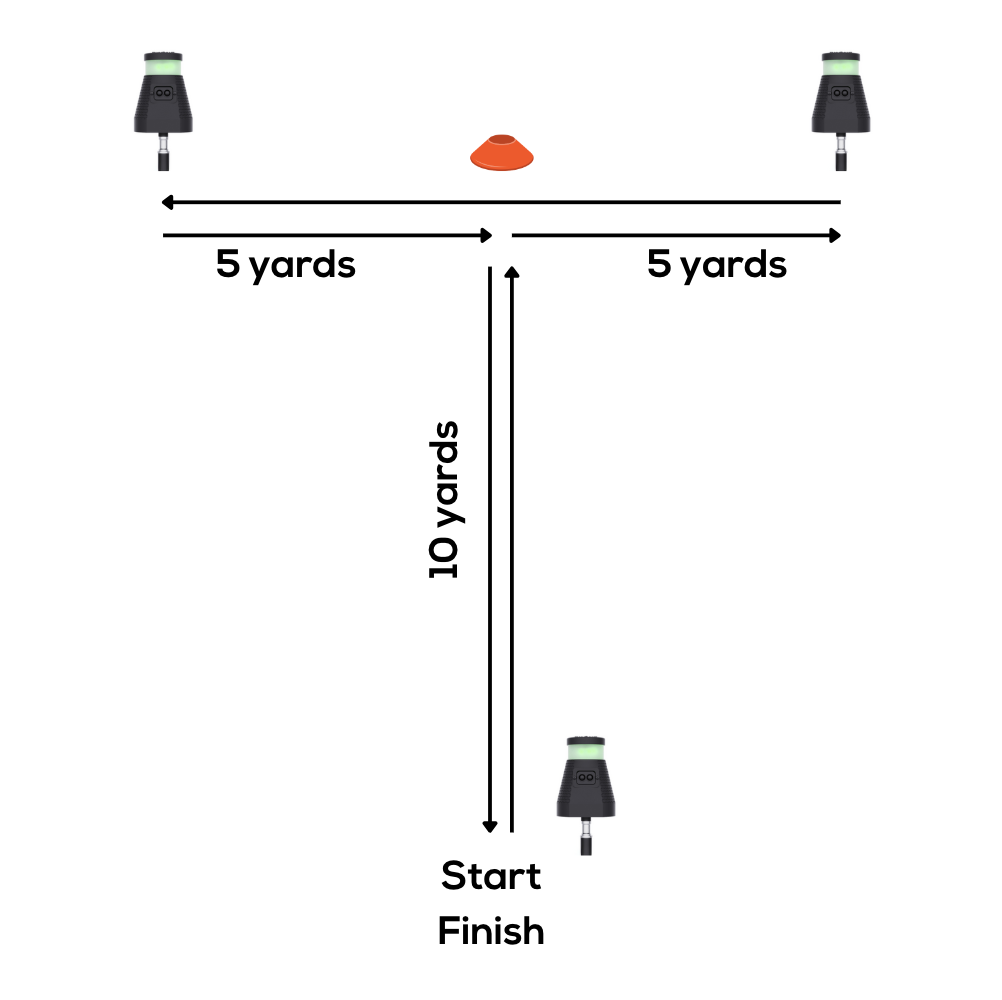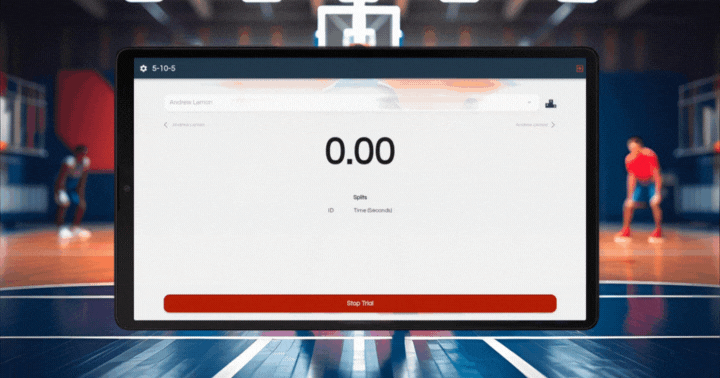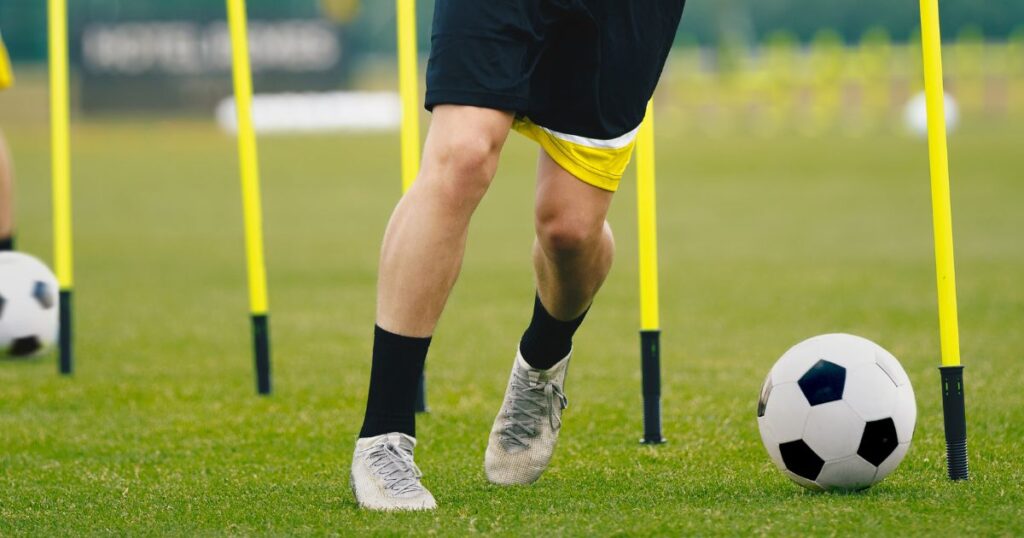Returning an athlete to play after injury is a complex, multifactorial decision-making process¹. Traditional return-to-play (RTP) criteria often emphasize strength restoration (e.g., isometric, isokinetic muscle strength or jump, single-leg hop performance) and time elapsed since injury. However, focusing solely on strength and basic functional tests may overlook subtle yet critical deficits in agility and change-of-direction ability. These residual deficits – often hidden when an athlete demonstrates normal strength – can increase reinjury risk and impede full performance on the field²⁵. This article explores how agility testing using timing gates (such as the Pro-Agility 5-10-5 shuttle and the T-Test) can unmask those hidden deficits, ensuring a more complete RTP assessment for physical therapists, athletic trainers, and strength and conditioning coaches.
Limitations of Strength Tests in RTP Assessment
Traditional strength and hop tests are important but not sufficient on their own. Studies have shown that athletes can achieve nearly symmetric strength and hop scores, yet still exhibit significant asymmetries or performance gaps in more dynamic tasks. For example, Bodkin et al.³ reported that despite seemingly normal single-leg hop performance, athletes with ACL reconstruction were significantly slower on an agility T-Test compared to healthy controls³. The T-Test forced them to rapidly accelerate, decelerate, and cut off both legs, exposing subtle compensatory movement patterns and weaknesses³. In contrast, simpler unilateral hop drills did not detect a difference in that study³. These findings highlight that traditional bilateral strength or straight-line tests alone may miss deficits in multi-directional speed, neuromuscular control, and coordination.
One reason is that agility or change-of-direction (COD) tasks place unique demands on the neuromuscular system. Quick cuts and pivots require not just strength, but also dynamic balance, reaction time, trunk control, and eccentric braking capacity in multiple planes⁸. An athlete might demonstrate normal quadriceps strength on an isometric strength test using a Dynamometer, yet still struggle to decelerate and push off effectively on the injured side during a sharp cut. Standard jump and hop tests usually occur in the sagittal plane and allow for self-paced effort, whereas agility drills involve unpredictable or rapid directional changes that better simulate sport situations⁸. Thus, by incorporating agility assessments, clinicians can spot “gaps” in recovery – such as a slower cut to one side, decreased quickness, or hesitation – that would be invisible in a pure strength test.
Why Agility Testing Matters for Return-to-Play

Because sport movements are often fast and multi-directional, agility testing has emerged as an essential component of evidence-based RTP batteries⁴⁷. A 2019 systematic analysis noted that most standard RTP test batteries (strength tests, jump, hop, landing tests, etc.) provide valuable information on physical capacity, but can lack some performance-related elements like sprinting and agility⁴. In other words, an athlete might be “cleared” by strength criteria yet still not be truly game-ready. Including agility or COD tests addresses this gap by evaluating the athlete’s ability to handle sport-specific demands. Poor agility performance (relative to norms or to the athlete’s own baseline) raises a red flag for potential risk or sub-par sport performance⁴.
Importantly, research links passing agility tests to safer return outcomes. In a landmark study of professional soccer players, Kyritsis et al.⁵ implemented a RTP test battery that added a running T-Test (an agility drill) to the usual strength and hop criteria. Athletes had to meet six objective criteria – including achieving a T-Test time under about 11 seconds – before clearance⁵. The results were striking: those who failed to meet all the criteria (agility included) had a 4 times greater risk of ACL graft re-rupture upon returning to sport⁵. In contrast, players who met all the criteria had much lower reinjury rates⁵.
Other experts have also advocated including agility and COD drills in RTP decisions. Grindem et al. and other groups recommend that RTP should not be based on time since surgery alone, but on key performance criteria – typically ≥90% limb symmetry in strength and hop tests, plus additional functional measures⁴⁷. Some protocols now explicitly incorporate an agility shuttle or T-Test, recognizing that dynamic functional symmetry is just as important as isolated strength⁵. In fact, one clinical commentary proposed that an athlete’s agility test time should be within 10% of a reference (such as the uninjured side or a pre-injury baseline) as a criterion for clearance⁴. However, clinicians must use judgment with such cutoffs – comparing to the uninvolved limb can be tricky if the “good” side has also deconditioned during downtime⁴. Whenever possible, comparing to pre-injury performance or normative data can be more telling. Regardless, the consensus is that agility tests add a valuable layer of objectivity to RTP evaluations that pure strength tests might miss⁴⁷.
Common Agility Tests Using Timing Gates
Pro-Agility 5-10-5 Shuttle

The Pro-Agility Test (also known as the 5-10-5 shuttle or 20-yard shuttle) is a rapid back-and-forth shuttle run that measures linear acceleration, deceleration, and lateral change-of-direction ability⁶.
Setup: Place three timing gates in a straight line, 5 (4.5 metres) yards apart. The middle gate is at the start/finish line. Alternatively, the set up can involve one timing gate at the start/finish line and cones 5 yards apart on either side. Multiple gates allow for split times to give more data.
Start Position: The athlete straddles the start line in a 3-point stance. The down hand must correspond to the initial direction of travel⁶.
Procedure: On the cue, the athlete sprints 5 yards to one side, touches the line at the far cone with their hand, then changes direction, sprints 10 yards to the far cone on the opposite side, touches that line, and finally turns back and sprints 5 yards to finish⁶.
Trials: Perform in each direction; record best time for each. Compare left-versus-right times to detect asymmetry.
Scoring and Norms: Elite athletes often complete it in just over 4 seconds. Recreational athletes around 5 seconds are good, slower times suggest deficits. Discrepancies >0.2–0.3 s between directions may indicate a meaningful asymmetry.
T-Test Agility Drill

The Agility T-Test is widely used to assess multi-directional agility including forward sprinting, lateral shuffling, and backward running⁶.
Setup: Gates in a T-formation: Start position A, position B (10 yards ahead), C and D (5 yards left/right of B). Timing gates at A, C and D. Alternatively, the set up can involve one timing gate at the start/finish line and cones at the other points. Multiple gates allow for split times to give more data.
Procedure: Sprint A→B, shuffle left to C, shuffle right to D, shuffle back to B, backpedal to A⁶.
Scoring: For adult athletes, ~10 seconds or less is common for high performers. Kyritsis et al.⁵ used a cutoff of 11 seconds in pro soccer.
Implementing Agility Tests in Rehabilitation

Introducing agility tests into the RTP progression should be done once the athlete has a baseline of strength, healed tissue, and fundamental movement control⁸. Typically, after an injury like ACL reconstruction, early phases focus on ROM, strength, and balance; as healing progresses, plyometrics and running are added. Agility drills come later, just before sport-specific reactive drills⁸. Warm-ups and consistent test conditions (surface, footwear, timing gate height) are key⁶.
Baseline comparisons can be pre-injury data, normative standards, or healthy teammates’ scores. However, the uninvolved limb can decondition, so caution is advised⁴.
If deficits are found (e.g., slower time or visible hesitation in one direction), targeted interventions can be planned – unilateral strength work, lateral plyometrics, or cutting technique retraining.
Progress from closed agility tests to open/reactive drills, as reactive agility is more sport-specific and imposes higher joint loads⁴⁷.
Benchmarks and Clearing the Athlete for Sport
Targets often include ≥90% symmetry or within 10% of norms⁴⁷. Kyritsis et al.⁵ used ≤11 s on the T-Test as a clearance benchmark in pro soccer. Both timing and movement quality should be considered before clearance.
Conclusion
Agility testing reveals residual deficits that strength tests can miss. Athletes meeting both strength and agility criteria have lower reinjury rates²⁵. Using drills like the Pro-Agility 5-10-5 and T-Test with timing gates gives objective, sport-specific data. By integrating these with strength measures, practitioners create a more complete, evidence-based RTP process¹⁴⁵.
References
Ardern CL, Glasgow P, Schneiders A, et al. 2016 Consensus statement on return to sport from the First World Congress in Sports Physical Therapy, Bern. Br J Sports Med. 2016;50(14):853-864. doi:10.1136/bjsports-2016-096278
Kotsifaki A, Van Rossom S, Whiteley R, et al. Single leg vertical jump performance identifies knee function deficits at return to sport after ACL reconstruction in male athletes. Br J Sports Med. 2022;56(9):490-498. doi:10.1136/bjsports-2021-104692
Bodkin SG, Slater LV, Hart JM, et al. Measures of agility and single-legged balance as clinical assessments in patients with ACL reconstruction and healthy individuals. J Athl Train. 2019;54(12):1260-1268. doi:10.4085/1062-6050-266-18
van Melick N, Prinsen N, Wittink H, et al. On-field tests for patients after ACL reconstruction: a scoping review. Orthop J Sports Med. 2021;9(12):23259671211051752. doi:10.1177/23259671211051752
Kyritsis P, Bahr R, Landreau P, Miladi R, Witvrouw E. Likelihood of ACL graft rupture: not meeting six clinical discharge criteria before return to sport is associated with a four times greater risk of rupture. Br J Sports Med. 2016;50(15):946-951. doi:10.1136/bjsports-2015-095908
Pauole K, Madole K, Garhammer J, Lacourse M, Rozenek R. Reliability and validity of the T-Test as a measure of agility, leg power, and leg speed in college-aged men and women. J Strength Cond Res. 2000;14(4):443-450
Read PJ, Oliver JL, Myer GD, et al. Residual deficits in reactive strength indicate incomplete restoration of athletic performance during rehabilitation. J Athl Train. 2023;58(5):423-429. doi:10.4085/1062-6050-0169.20
Mike Reinold. Return to Play Testing After ACL Reconstruction [Internet]. MikeReinold.com; 2019. Available from: https://mikereinold.com/return-to-play-testing-after-acl-reconstruction/

